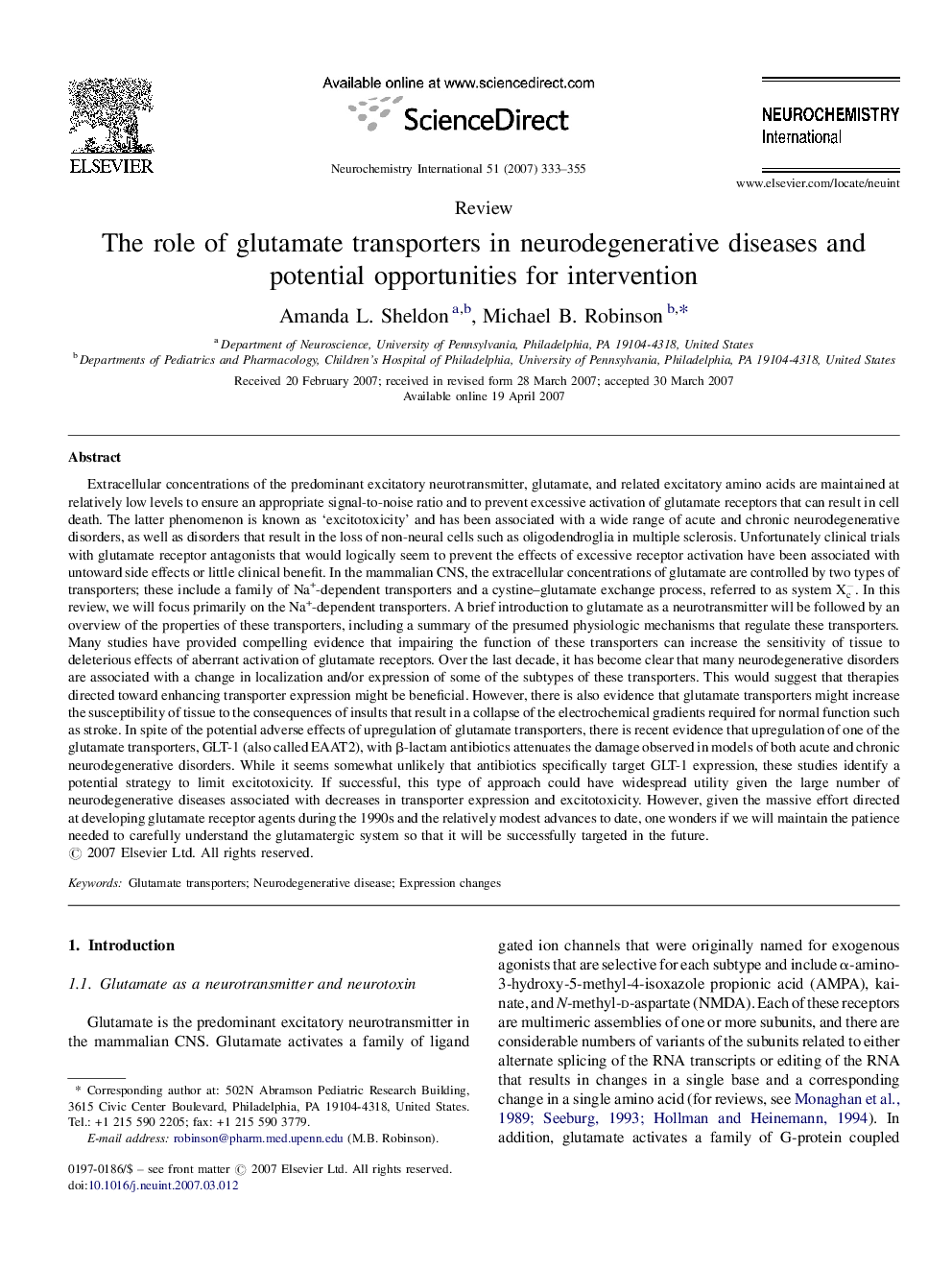| کد مقاله | کد نشریه | سال انتشار | مقاله انگلیسی | نسخه تمام متن |
|---|---|---|---|---|
| 2201822 | 1551320 | 2007 | 23 صفحه PDF | دانلود رایگان |

Extracellular concentrations of the predominant excitatory neurotransmitter, glutamate, and related excitatory amino acids are maintained at relatively low levels to ensure an appropriate signal-to-noise ratio and to prevent excessive activation of glutamate receptors that can result in cell death. The latter phenomenon is known as ‘excitotoxicity’ and has been associated with a wide range of acute and chronic neurodegenerative disorders, as well as disorders that result in the loss of non-neural cells such as oligodendroglia in multiple sclerosis. Unfortunately clinical trials with glutamate receptor antagonists that would logically seem to prevent the effects of excessive receptor activation have been associated with untoward side effects or little clinical benefit. In the mammalian CNS, the extracellular concentrations of glutamate are controlled by two types of transporters; these include a family of Na+-dependent transporters and a cystine–glutamate exchange process, referred to as system Xc−. In this review, we will focus primarily on the Na+-dependent transporters. A brief introduction to glutamate as a neurotransmitter will be followed by an overview of the properties of these transporters, including a summary of the presumed physiologic mechanisms that regulate these transporters. Many studies have provided compelling evidence that impairing the function of these transporters can increase the sensitivity of tissue to deleterious effects of aberrant activation of glutamate receptors. Over the last decade, it has become clear that many neurodegenerative disorders are associated with a change in localization and/or expression of some of the subtypes of these transporters. This would suggest that therapies directed toward enhancing transporter expression might be beneficial. However, there is also evidence that glutamate transporters might increase the susceptibility of tissue to the consequences of insults that result in a collapse of the electrochemical gradients required for normal function such as stroke. In spite of the potential adverse effects of upregulation of glutamate transporters, there is recent evidence that upregulation of one of the glutamate transporters, GLT-1 (also called EAAT2), with β-lactam antibiotics attenuates the damage observed in models of both acute and chronic neurodegenerative disorders. While it seems somewhat unlikely that antibiotics specifically target GLT-1 expression, these studies identify a potential strategy to limit excitotoxicity. If successful, this type of approach could have widespread utility given the large number of neurodegenerative diseases associated with decreases in transporter expression and excitotoxicity. However, given the massive effort directed at developing glutamate receptor agents during the 1990s and the relatively modest advances to date, one wonders if we will maintain the patience needed to carefully understand the glutamatergic system so that it will be successfully targeted in the future.
Journal: Neurochemistry International - Volume 51, Issues 6–7, November–December 2007, Pages 333–355